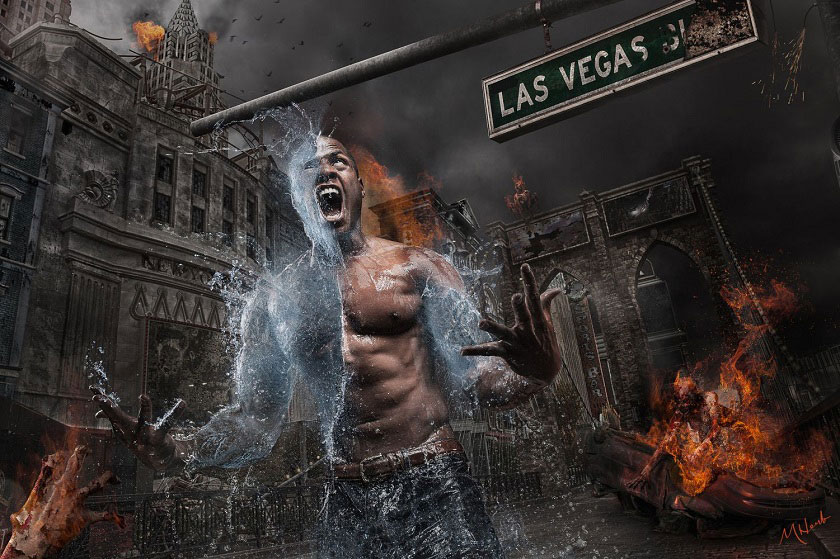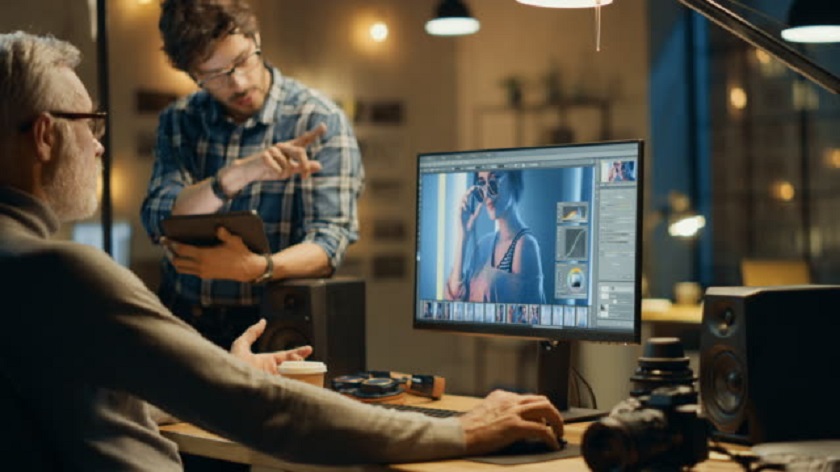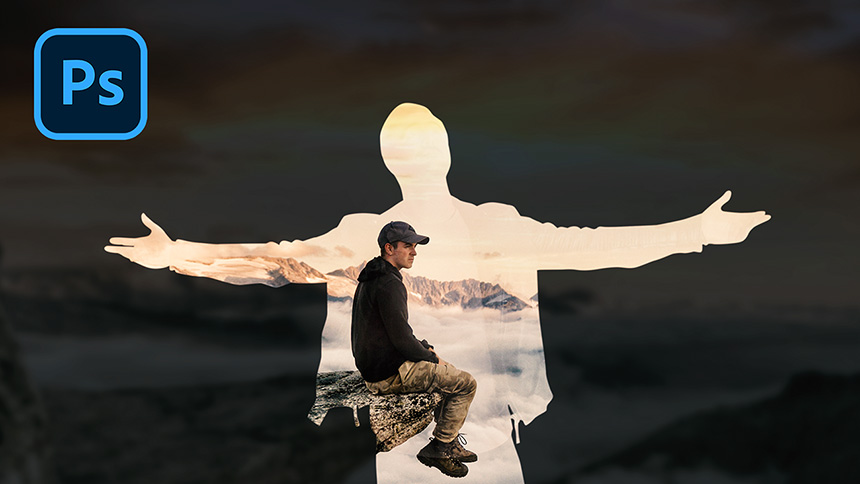Best Selling Products
10 things you can learn from makeup artists
Nội dung
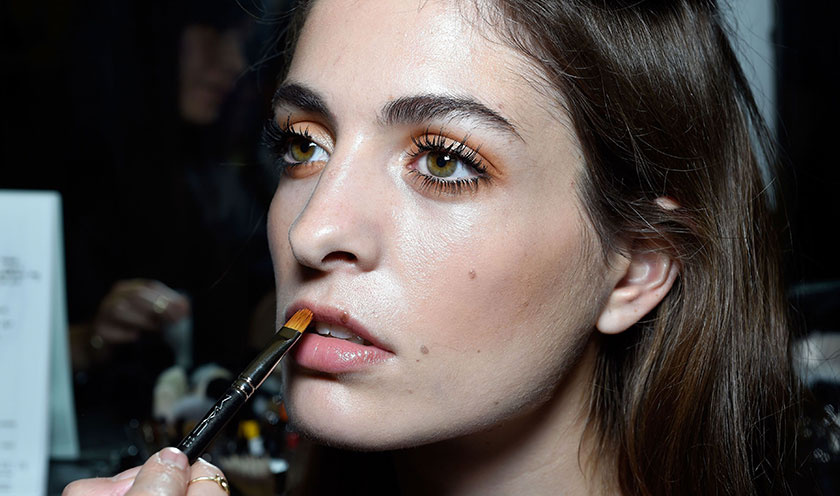
As an expert in photo editing, you probably already understand that we don't work in a no-nonsense environment. We photo editors have always been part of a team working towards a common goal: creating a beautiful image. And knowing how and why the other creative professionals on your team do their part will be of great benefit to you.  Today we're going to take a look at some tricks you can learn from your makeup artist, which can come in handy as you make post-production decisions.
Today we're going to take a look at some tricks you can learn from your makeup artist, which can come in handy as you make post-production decisions. 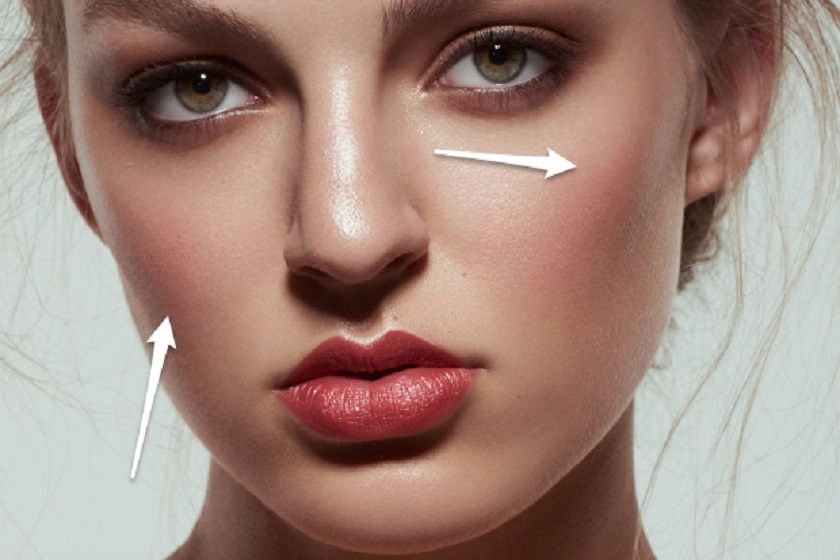 Makeup artists use blush to create the illusion of a healthy flush. It is applied on the apple of the cheek, mimicking the result of blood rushing to the surface of the skin. It is quite common to correct the color of the blush when it changes the color of the skin in the evening. This results in a skin that looks flat and colored. You shouldn't remove it completely, instead gently blend if you feel its "line" is too harsh.
Makeup artists use blush to create the illusion of a healthy flush. It is applied on the apple of the cheek, mimicking the result of blood rushing to the surface of the skin. It is quite common to correct the color of the blush when it changes the color of the skin in the evening. This results in a skin that looks flat and colored. You shouldn't remove it completely, instead gently blend if you feel its "line" is too harsh. 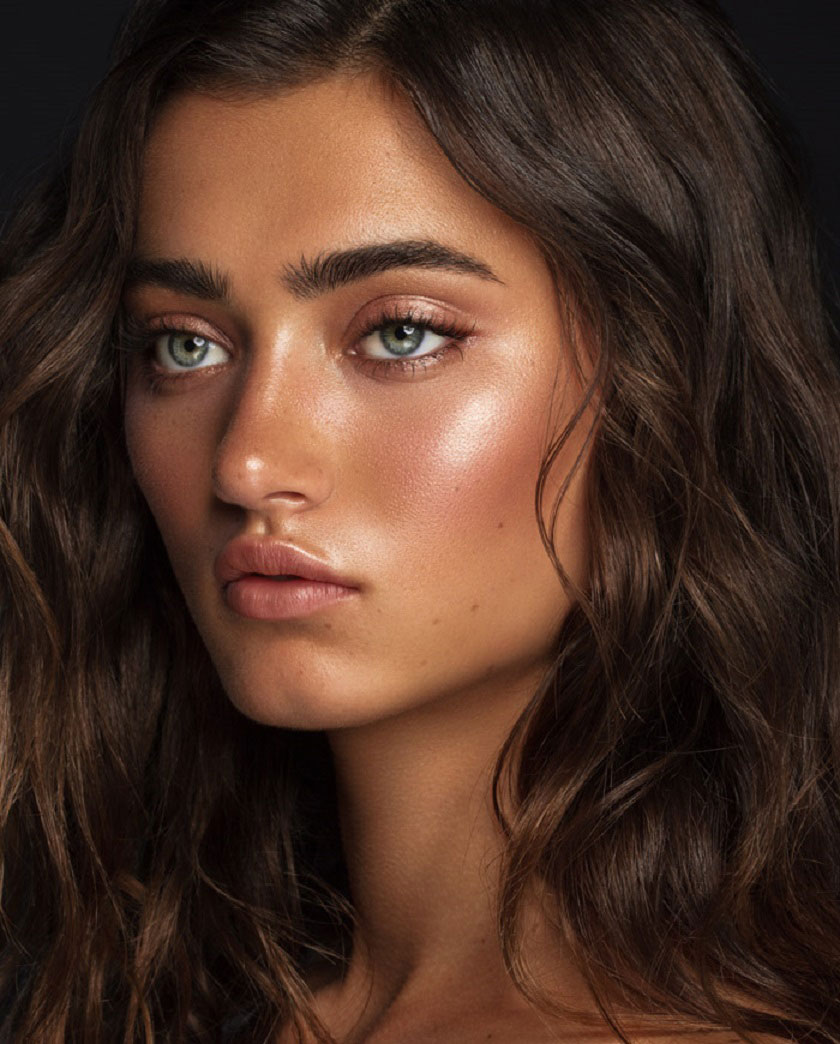 You may have seen your makeup artist apply a dark eyeliner or pencil to the upper lashline. This is done to make the lashes appear thicker and it helps to visually lengthen the eye, making it look "sharper". When redoing your eyes, try to bold the upper lash line, making sure you don't let too much light show through your lashes.
You may have seen your makeup artist apply a dark eyeliner or pencil to the upper lashline. This is done to make the lashes appear thicker and it helps to visually lengthen the eye, making it look "sharper". When redoing your eyes, try to bold the upper lash line, making sure you don't let too much light show through your lashes. 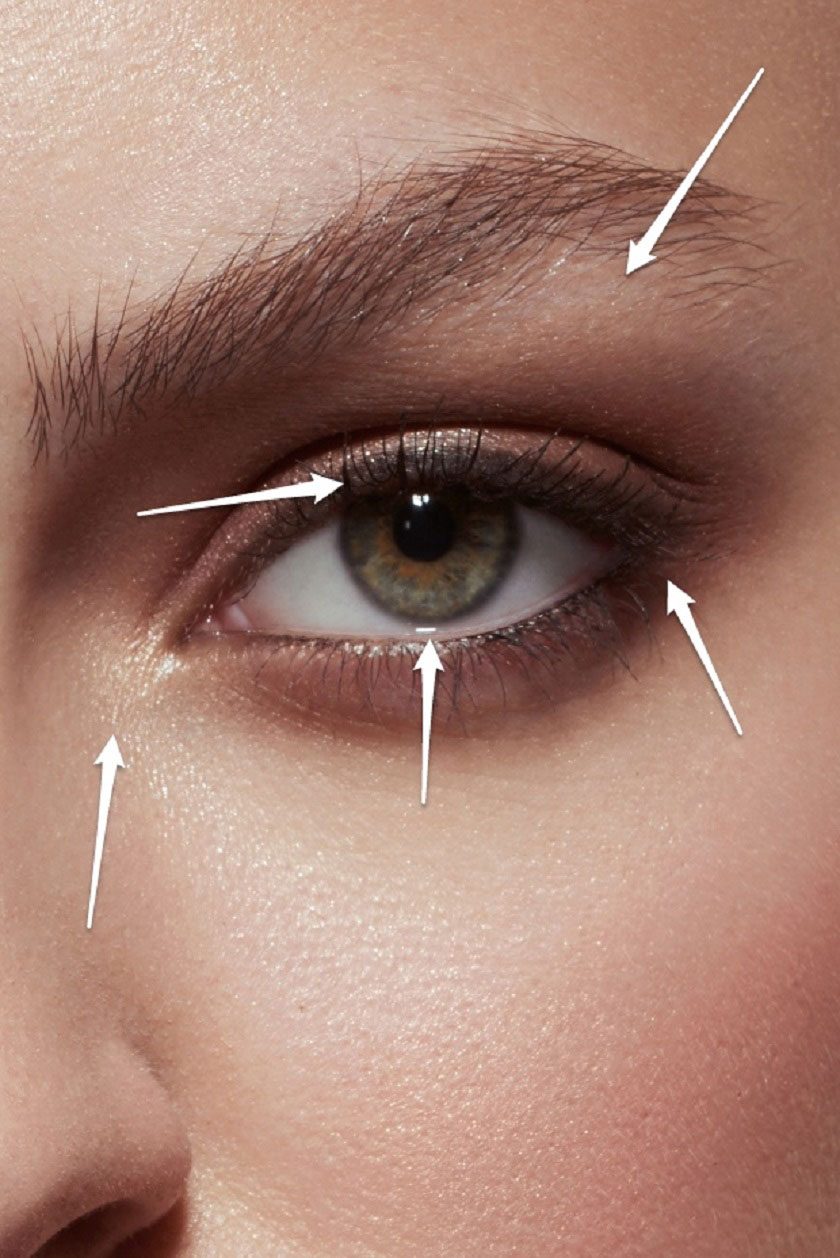
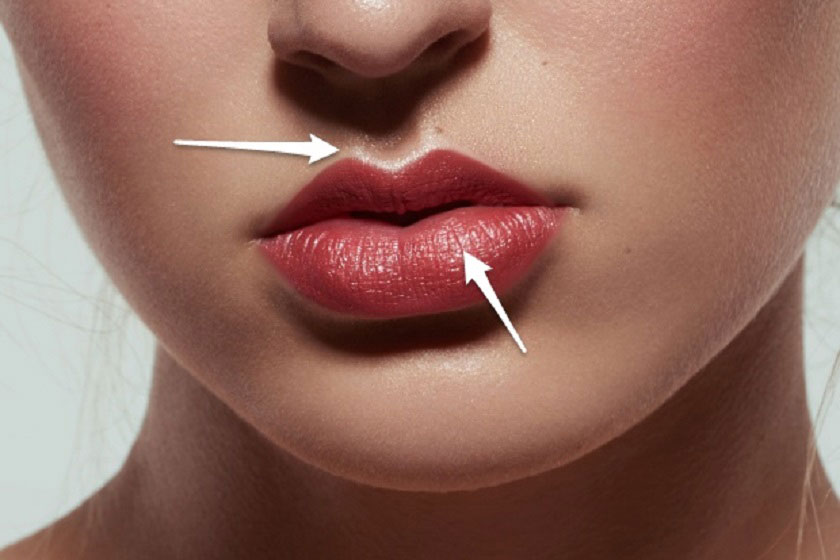 I'm not mentioning contouring here intentionally - a technique adopted with great enthusiasm by makeup artists and retouchers alike. While the idea of using dodge and burn to add volume to the face isn't new, I'm actually in favor of "enhancing" a model's facial features by generously enhancing, expanding. It often results in images that look like cartoons and too much. Moderation is key to all of our work. After all, not everyone needs sharp cheekbones
I'm not mentioning contouring here intentionally - a technique adopted with great enthusiasm by makeup artists and retouchers alike. While the idea of using dodge and burn to add volume to the face isn't new, I'm actually in favor of "enhancing" a model's facial features by generously enhancing, expanding. It often results in images that look like cartoons and too much. Moderation is key to all of our work. After all, not everyone needs sharp cheekbones
 Today we're going to take a look at some tricks you can learn from your makeup artist, which can come in handy as you make post-production decisions.
Today we're going to take a look at some tricks you can learn from your makeup artist, which can come in handy as you make post-production decisions. Healthy blush
 Makeup artists use blush to create the illusion of a healthy flush. It is applied on the apple of the cheek, mimicking the result of blood rushing to the surface of the skin. It is quite common to correct the color of the blush when it changes the color of the skin in the evening. This results in a skin that looks flat and colored. You shouldn't remove it completely, instead gently blend if you feel its "line" is too harsh.
Makeup artists use blush to create the illusion of a healthy flush. It is applied on the apple of the cheek, mimicking the result of blood rushing to the surface of the skin. It is quite common to correct the color of the blush when it changes the color of the skin in the evening. This results in a skin that looks flat and colored. You shouldn't remove it completely, instead gently blend if you feel its "line" is too harsh. No clumps
What's something you want in your cat litter, but never in your mascara? That's right, that's the lump! Unfortunately, if you look too close up you can't accept this aspect and even with the best makeup, you can still see the little mascara clumps on the lashes. Make sure to clean your lashes with your Clone Stamp, as it contributes to a much cleaner look overall.Perfect eyelashes
When it comes to eyelash extensions, makeup artists use certain techniques to apply mascara, using the brush tip to wiggle around the base of the lashes. It is done to ensure that every lash is properly separated and has a defined shape - thicker at the base, tapering towards the end - and that the mascara is evenly applied over them. This is how you want the lashes to look like in the finished image. When cleaning or adding lashes, pay attention to their shape - try to avoid making the ends look thick and stiff.Thicker Eyelashes
 You may have seen your makeup artist apply a dark eyeliner or pencil to the upper lashline. This is done to make the lashes appear thicker and it helps to visually lengthen the eye, making it look "sharper". When redoing your eyes, try to bold the upper lash line, making sure you don't let too much light show through your lashes.
You may have seen your makeup artist apply a dark eyeliner or pencil to the upper lashline. This is done to make the lashes appear thicker and it helps to visually lengthen the eye, making it look "sharper". When redoing your eyes, try to bold the upper lash line, making sure you don't let too much light show through your lashes. A bright eye
A widely known trick to make eyes look brighter and more rested is to apply a light eyeshadow (or highlighter) in the inner corner of the eye. Keep this in mind when reshaping the eyes and slightly avoiding the inner corner, lengthening the lash area in a thin line up to the lower eyelid.Open your eyes wide
To visually "widen" the eyes and make them appear larger, makeup artists use a light beige eyeliner applied to the contour of the lower eyelid. The same effect can be achieved by carefully cleaning the area of mascara residue and avoiding them afterwards. The opposite approach to bold eyeliner is used to make the round eyes more almond-like. Although creating eyeliner from scratch can be difficult and often looks fake, you can still burn the waterline a bit for a similar and more subtle result.Eye lengthening
Another trick to lengthen the eyes is to use a dark pencil in the outer corner, mixed with eyeshadow. Try burning the area lightly, following the pattern of the eyeshadow and making the upper and lower lash lines at the outer corner slightly darker than the shadow.Add a little light
Highlighter is often used underneath the brows, on the brow bone to make the brow arch appear higher, and the brows themselves clearer and cleaner. You can achieve this look in post-production by lightly dodging the area under your brows, but be careful of making the transition too strong with your eyeshadow - this can make your eye makeup look heavier. plan.
Fuller lips
You may have noticed that often lip gloss or even shimmer eyeshadow is only used in the center of the lower lip. This will show you how it adds volume to the lips, making them look fuller. So if you're working with non-glossy makeup, avoid getting in between highlights in the center of your lips - it usually means glossy and "crispy", not smooth.Cupid's Bow
One handy trick that both retouchers and makeup artists use in their arsenals is to add definition to “the cupid's bow.” It is usually done with the help of highlighter and is recreated after painting by carefully dodging the V-shape just above the center of the upper lip. It helps to shape the mouth, gives a neater look to the lipstick, and makes the upper lip look a bit fuller. I'm not mentioning contouring here intentionally - a technique adopted with great enthusiasm by makeup artists and retouchers alike. While the idea of using dodge and burn to add volume to the face isn't new, I'm actually in favor of "enhancing" a model's facial features by generously enhancing, expanding. It often results in images that look like cartoons and too much. Moderation is key to all of our work. After all, not everyone needs sharp cheekbones
I'm not mentioning contouring here intentionally - a technique adopted with great enthusiasm by makeup artists and retouchers alike. While the idea of using dodge and burn to add volume to the face isn't new, I'm actually in favor of "enhancing" a model's facial features by generously enhancing, expanding. It often results in images that look like cartoons and too much. Moderation is key to all of our work. After all, not everyone needs sharp cheekbones Sadesign Co., Ltd. provides the world's No. 1 warehouse of cheap copyrighted software with quality: Panel Retouch, Adobe Photoshop Full App, Premiere, Illustrator, CorelDraw, Chat GPT, Capcut Pro, Canva Pro, Windows Copyright Key, Office 365 , Spotify, Duolingo, Udemy, Zoom Pro...
Contact information
SADESIGN software Company Limited
Sadesign Co., Ltd. provides the world's No. 1 warehouse of cheap copyrighted software with quality: Panel Retouch, Adobe Photoshop Full App, Premiere, Illustrator, CorelDraw, Chat GPT, Capcut Pro, Canva Pro, Windows Copyright Key, Office 365 , Spotify, Duolingo, Udemy, Zoom Pro...
Contact information
SADESIGN software Company Limited









































